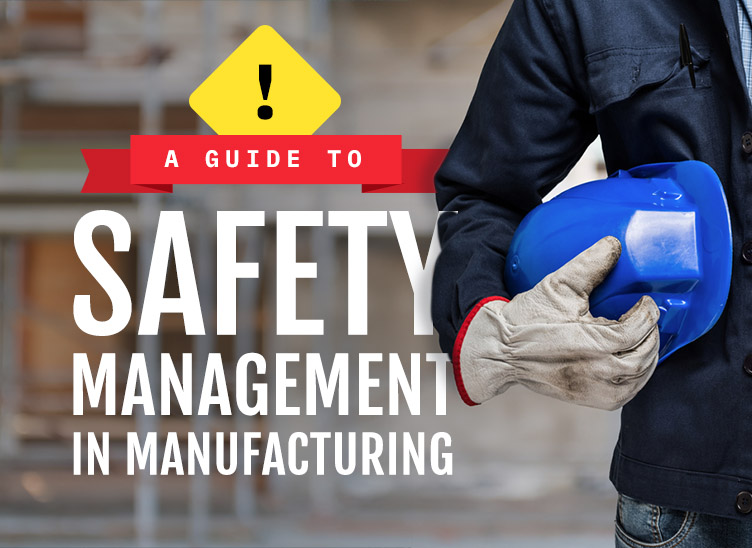
A Guide to Safety Management in Manufacturing
Manufacturing is an industry with unique safety risks because of the work involved. In 1970, Congress passed the Occupational Health and Safety Act (or OSHA) help reduce hazards in the workplace for employers and employees. With safety management, there is a focus to put proper protocols in place and everyone takes preventative measures, workplaces injuries are avoided.
The regulations instituted under OSHA help create a healthy working environment. They have set the framework for the entire country for standards on electrical equipment, electrical hazards, machinery guarding, permit use, and preventing accidents. In October 2015, the Institute of Scrap Recycling Industries, or ISRI, joined with OSHA to help promote these standards in the recycling industry. There are specific areas that OSHA has improved safety on, including transportation, radiation, chemicals, explosives, machining, inspections, and training.
Transportation
Manufacturing isn’t the only industry that depends heavily on transportation for services and products. Whether they are delivering or picking up materials, it’s important that the drivers in transportation are properly trained in safety protocols. The costs involved in hiring, training, and ensuring drivers is a large amount, but they are much less than the costs associated with accidents.
A well-trained fleet of drivers and transit directors often choose safety practices naturally. They are trained to identify hazards and know how to avoid them with:
- Loading and unloading trucks
- Special considerations, like drums on a ramp
- Safety features on each vehicle
- Laws for drivers and specific types of loads
Transportation is an area that benefits a lot from technology. There are products that help track efficiency, diagnose problems, and even monitor activity in trucks to suggest better ways to do the job, and make sure safety protocols are being met.
Radiation
Society has known the risks of too much exposure to radiation for a long time now and knows the importance of tracking it. To avoid injury or death, it’s vital that employees are trained to leave the proximity of radiation immediately. This helps limit the amount of tissue damage because the exposure is minimal.
Regulations require proper clothing to be worn, including eyeglasses and side shields. Bodies must be covered with long-sleeves in proper materials, sunscreen, and lead aprons. Warning signs should be posted in appropriate areas, where they are visible to all and warn sufficiently of the dangers. These precautions can help limit the amount of damage done to employees, but it also takes training on when to leave the area and seek medical help.
Chemical Safety
Safety management for chemicals involves two very important steps. The first is properly labeling all chemicals, with an extra label warning if the chemical is hazardous. The other steps are sufficient training in the use and storage of chemicals. This training should also cover precautions to take to avoid exposure injuries, improper mixing, and how to treat injuries. If all employees know this information, they can watch for signs and administer help if a co-worker is in trouble, potentially saving their lives.
Explosives
Inspections are one of the most effective ways to prevent explosions in the workplace. They help reduce risk by helping to monitor proper use, storage, and any potential electrical malfunctions. There are regulations on storage that are important to follow, such as
- Never store them underground with only one exit
- All facilities must be approved
- No smoking areas or open flames within 50 feet
When inspections are ongoing, employees are more aware of the expectations and problems are stopped sooner.
Machining
Most manufacturing facilities have many kinds of machines, from forklifts to expensive machines that complete automated tasks. Training in properly operating machines is an important part of preventing accidents, limiting access to select employees. Those who are around machines at any time should be aware of their surroundings and watch out for any moving parts, staying out of the way during operation.
Inspections and Training
Regulations require specific inspections, so OSHA has provided checklists to make sure they have an acceptable minimum standard. Some examples include:
- Proper communicating for reporting accidents
- An emergency plan for specific scenarios, including risks mentioned early, plus more risks including fire prevention and proper exits
- Properly made and maintained surfaces for walking and working, limiting risks for falling injuries
- Available first aid stations and medical supplies
Since training is the largest factor in a safe and healthy workplace, employers should provide continual opportunities to receive more. Never train on the first day and then expect employees to remember for their entire careers there. Keeping safety standards at the front of everyone’s mind helps improve efficiency, limits citations, and reduces costs in the long run, but it also keeps everyone safe, which is the main goal.
As a trusted company that offers plastic extrusion services, plastic injection molding, custom rubber molding, and more we know first-hand the importance of proper safety measures and we’re here to serve you with your manufacturing needs.
